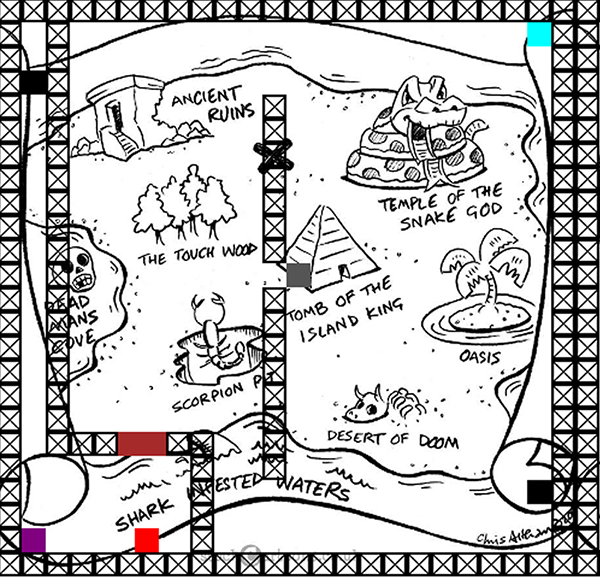It’s beyond annoying when that automated customer service voice doesn’t understand what you’re saying, right? Or when Siri just can’t seem to get that you’re asking “her” to call Joe, not Moe.
Well, Kristina Striegnitz, associate professor of computer science, is conducting research that could make these dialog systems – computer systems that humans interact with using natural language (speech or text) – less cumbersome.
Specifically, she’s created a puzzle game that allows her to study how natural language is generated – in the form of dialog – in a virtual computer environment.
In it, two players must solve puzzles collaboratively by pushing a ball to a designated goal. The catch is that the players may or may not be able to see the exact puzzle their partner is trying to solve. Each puzzle, however, shares the same landmarks, despite the fact that the configuration of obstacles the ball must be moved around is different. And each player can drop blocks, to help guide the ball, into the other’s puzzle.
This means that the players must exchange instructions via text message, creating a dialogue with phrases like: “Turn right at oasis” or “drop block at base of ancient ruins’ steps.”
“The pair who solved the puzzles fastest in our data used a highly interactive strategy in which they placed blocks and gave feedback in a very rapid exchange,” Striegnitz said. “This is interesting because it might indicate that making good use of the shared physical space (landmarks) helps communication.”
She hopes this insight will lead to better interaction with the likes of Siri.
“My main goal is to make these dialog systems more efficient and less tedious, by making the interaction more natural and better able to recover from misunderstandings,” Striegnitz said. “By studying dialog systems situated in a real or simulated physical environment, we might someday have systems that give better driving directions. Or perhaps have improved systems that use a virtual environment for teaching and training, like immersive games through which children learn science concepts and problem solving skills.”


